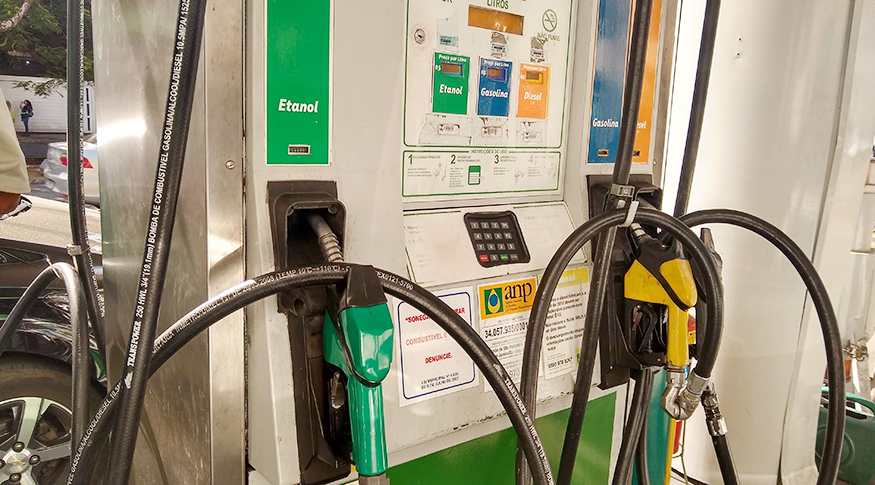IPCA
IPCA stands at -0.68% in July, lowest rate since the start of the time series, in 1980
August 09, 2022 09h00 AM | Last Updated: August 10, 2022 02h00 AM

Driven by the fall of fuel prices, mainly of gasoline and ethanol, and of electricity, the IPCA stood at -0.68% in July, after the change of 0.67% in June. That is the lowest rate registered since the beginning of the time series, in January 1980. In the year, cumulative inflation is 4.77% and, in the last 12 months, 10.07%. The data are from the Extended National Consumer Price Index - IPCA, released today (9) by the IBGE.
“Petrobrás announced, on July 20, a 20-cent reduction in the average price of the fuel sold to distributors. Also important was Complementary Law no. 194/22, sanctioned in the end of June, reducing the ICMS rates on fuels, electricity and communications. This decrease affected not only the group Transportation (-4.51%), but also Housing (-1.05%), due to electricity (-5.78%). These two groups, the only ones with negative change of the index, drove the result downwards,” says pedro Kislanov, manager of the survey.
The price of gasoline fell 15.48% and that of ethanol, 11.38%. Gasoline, aloee, accounted for the main positive impact among the 377 subitems that form the IPCA, with -1.04 p.p. Also, there was fall of the price of vehicle gas, with -5.67%.
The researcher also explains thar besides the reduction of the ICMS share charged on electricity servicrs, another factos had an effect on housing: the approval, by the Brazilian Electricity Regulatory Agency (ANEEL), of Extraordinary Fare Revisions of ten distributors sprrad all over the country, which led to a reduction of fares starting on July 13th.
The group Wearing apparel decelerated from 1.67% to 0.58%, after recording the biggest positive change among the groups surveyed in the months of May and June. “There has been significant fall of cotton pricrs, which is one of the main types of raw material in the textile industry, in the end of June,” says Mr. Kislanov. Men’s apparel went from 2.19% in June to 0.65% in July, whereas women’s apparel changed from 2.00% to 0.41%. Footwear and accessories (1.05%) recorded a change slightly below that in the previous month, when they registered 1.21%.
Health and personal care (0.4%) also recorded deceleration, due to the reduced change of health insurance (1.13%), from June (2.99%), and to the decrease of 0.23% of the items in personal hygiene, versus the rise of 0.55% in June.
On the other hand, the sector of food and beverages accelerated in the month of July. “The group accounted for the biggest change (1.30%) and forn a positive impact (0.28 p.p.) on the monthly index. The result was driven by long-life milk, which rose above 25% and by dairy products such as cheese (5.28%) and butter (5.75%), for example. This rise of the product was mainly due to two factors: first of all, because of the period between harvests, which lasts from march to September of October, that is, it is a period when pastures are drier, thus reducing the supply of milk on the market; and because of the high production costs.”
The rise of milk added most specifically to the result of food at home, which accelerated from 0.63% in June to 1.47% in July. Another highlight was fruits, which rose 4.40% and an impact of 0.04 p.p. on the IPCA of July. The main decreases were recorded by tomato (-23.68%), potato (-16.62%) and carrots (-15.34%), which, together, accounted for -0.12 p.p.
Personal expenses (1.13%) accelerated against the previous month (0.49%) and accounted for the second main positive impact (0.11 p.p.) on July’s month. The two main subitems were domestic workers (1.25%) and cigarettes (4.37%), the latter due to price adjustments between 4.44% and 8.70% in products traded one of the companies surveyed, from July 3rd on.
All the areas recorded negative changes in July. The smallest change was registered in Goiânia (-2.12%), affected by the decreases of 21.57% in the prices of gasoline and of 14.90% in electricity. The biggest change was that of São Paulo (-0.07%), the only region to record increase in electricity (0.37%) in the month. Other contributions to the result of the area came from long life milk (21.95%) and residential rent (1.85%).
IPCA drops 0.68% in July
The National Consumer Price Index was -0.60% in July, lowest change recorded since the beginning of the time series, in April 1979. The index registers a cumulative increase of 4.98% in the year and of 10.12% in the last 12 months. Food products went from 0.78% in June to 1.31% in July. Non-food products changed from 0.57%% to -1.21%.
More about the surveys
The IPCA covers families with incomes from 1 to 40 minimum wages, while the INPC covers families with incomes from 1 to 5 minimum wages, residing in the Metropolitan Areas of Belém, Fortaleza, Recife, Salvador, Belo Horizonte, Vitória, Rio de Janeiro, São Paulo, Curitiba, Porto Alegre, in addition to the Federal District and the municipalities of Goiânia, Campo Grande, Rio Branco, São Luís and Aracaju. Please, access the data at Sidra.


















